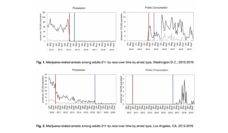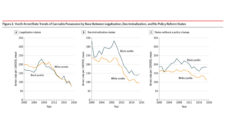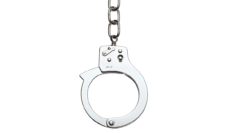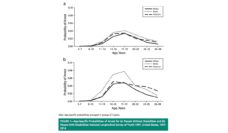Incarceration rates in the United States are grossly inflated. In 2015, 698 out of 100,000 individuals in the U.S. were imprisoned compared to 148 in the UK and 78 in Germany. Marginalized populations, especially some populations of color, often bear the brunt of aggressive policing and excessive arrest practices, with adverse consequences for mental and physical health and for social determinants of health, such as employment, income, and education. Harsh and racist policing erodes the trustworthiness of police, damaging community safety and cohesion. Quite simply, it is unjust.
Media and research often focus on urban policing practices and tend to ignore law enforcement in suburban and rural areas. However, recent studies have started documenting incarceration patterns outside of metropolitan areas, with compelling findings: arrest rates and racial arrest disparities in non-urban areas often exceed those in urban areas. The authors of those studies have offered some explanations: prison expansion has predominantly taken place in rural towns. Against the background of decades-long and continuing rural economic decline, this may create financial incentives for harsher policing. Further, just as in urban areas, small town incarceration often concentrates in racially and ethnically segregated neighborhoods, pointing to segregation as a root cause for racial arrest disparities across the rural-urban spectrum.
My colleagues and I sought to describe nation-wide racial arrest patterns by rural-urban setting and U.S. Census region. We used U.S.-wide 2016 arrest data from the Federal Bureau of Investigation’s Uniform Crime Reporting (UCR) Program, which annually collected standardized crime statistics data from over 18,000 law enforcement agencies nationwide. (The UCR program is currently being replaced with the National Incident Based Reporting System.) We calculated county arrest rates per 1,000 population by race of the offender (measured as White, Black, American Indian, and Asian in the UCR data), separately for youth and adults. Ethnicity was not captured in 2016.
Policing of American Indian populations has received little attention in the media and research, which, in view of our findings, is a critical omission.
Our study found that, across the U.S., arrest rates and racial arrest disparities were higher in rural compared with urban areas. We found the highest arrest rates among American Indian and Black populations throughout the country, and especially in the Midwest. Arrest rates and racial disparities were highest in small and medium-sized towns, closely followed by rural areas and suburbs. Arrests were lowest in metropolitan areas.
Arrest rates were lower among youth than adult populations; however, arrest rates were highest in Black and American Indian populations across both youth and adults. While not our main focus, arrest rates among American Indian populations were among the highest of all racial groups. Policing of American Indian populations has received little attention in the media and research, which, in view of our findings, is a critical omission.
Our study adds to a growing body of literature pointing out racial arrest disparities in non-urban places in the U.S. Rural areas and especially medium and small towns are potential hotspots of aggressive and racially biased policing. It also adds regional nuance to these general rural-urban policing patterns, with highest arrest rates and racial disparities in the Midwest, followed by the Northeast and West, and lowest overall in the South.
The mounting evidence for large racial arrest disparities in non-urban areas indicates that interventions to undo racist policing in the U.S. need to include explicit strategies for non-urban policing practices. Additionally, sustainable interventions are needed that genuinely address rural economic crises and rural poverty. Shifting from prison/penalty systems towards other industries as sources of community income may be key to defueling harsh arrest practices outside of urban areas.
Photo via Getty Images














